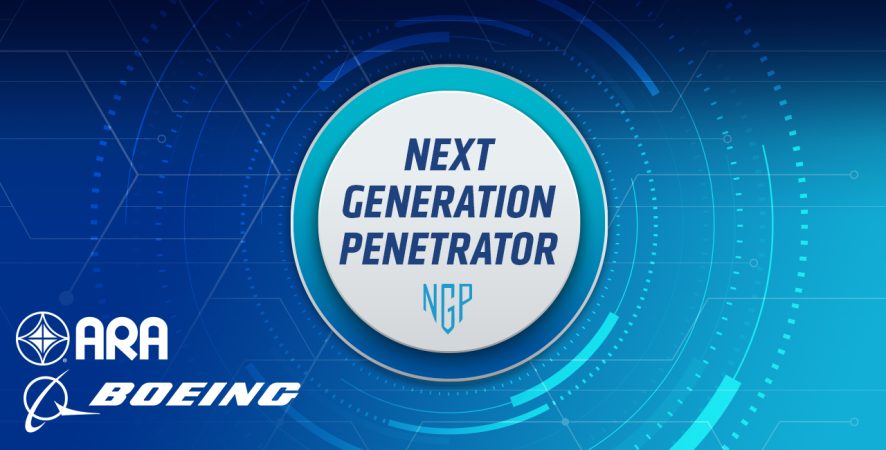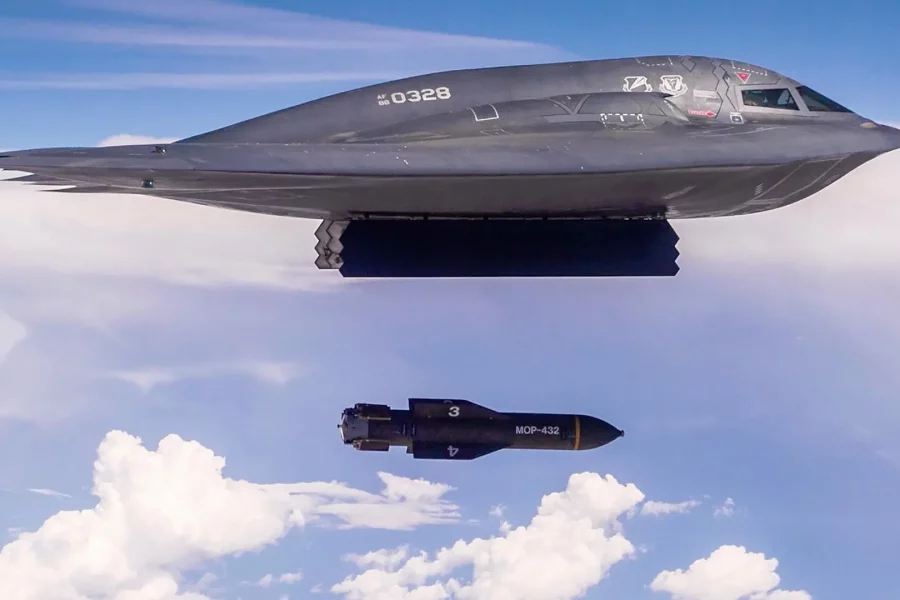The Air Force awarded a prototyping contract for a successor to the GBU-57 Massive Ordnance Penetrator, the hulking munition used to destroy Iran’s deeply buried nuclear development sites this June as part of Operation Midnight Hammer.
Applied Research Associates announced Sept. 5 it had a contract with the Air Force Life Cycle Management Center’s Armaments Directorate to lead development on a Next-Generation Penetrator weapon.
Boeing, which led MOP development and built the weapons, is a partner on the project; it will develop the tail kit and support design integration.
ARA’s announcement said the company would be the “system design agent” for the two-year program, with a goal to “produce and test sub-scale and full-scale prototype munitions” that can target “hard and deeply buried targets that pose critical challenges to U.S. national security.”
The Air Force could not provide a comment in time for publication.
In March 2024, the Air Force issued a request for information from industry for a Next-Generation Penetrator, seeking concepts for “a prototype penetrator warhead design capable of defeating Hard and Deeply Buried Targets.”
The RFI specified that the prototype design should not exceed 22,000 pounds. Presuming that refers to the entire weapon, that would make the NGP a little more than two-thirds the size of the MOP and therefore deployable on more platforms. The B-2 is the only aircraft in the Air Force fleet certified to carry the MOP, and the new B-21 bomber is estimated to have about two-thirds the span of the B-2, with a smaller payload capacity.
The request also told industry the Air Force wanted NGP designs with:
- Accuracy within 2.2 meters 90 percent of the time
- Blast, fragmentation, and penetration effects
- Possible integration of embedded fuze technology
The service noted that it wanted to move fast, with “a feasible and affordable technology demonstration event in an accelerated 18-to-24-month timeframe,” matching the timeline of the ARA contract. The request for information also suggested the Air Force wanted around 10 sub-scale and 3-5 full-scale prototype warheads in that timeframe. It is not clear how many prototypes are included in the ARA contract.
ARA did not disclose the value of the contract, but the Air Force’s 2026 budget request noted plans to award in August 2025 around $107 million in various contracts for Next-Generation Penetrator development.
Interest in the Massive Ordnance Penetrator and its successor spiked this summer when the MOP was used in operations for the first time ever during Midnight Hammer. Developed by Boeing, the Air Force, and the Defense Threat Reduction Agency, the bomb is a 30,000-pound, 20-foot-long behemoth 31.5 inches in diameter. It is believed to be capable of penetrating through layers of solid rock, steel, concrete and other materials to reach laboratories and storage facilities buried 200 feet underground
Chairman of the Joint Chiefs Air Force Gen. Dan Caine later revealed details about the decades-long development process that led to the MOP, led by the little-known DTRA headquartered at Fort Belvoir, Va., with the mission to counter weapons of mass destruction.
The Air Force plans to spend $120.8 million on the program in fiscal 2025 and $73.7 million in 2026. Budget documents indicate design, development, and testing will continue through 2027.



